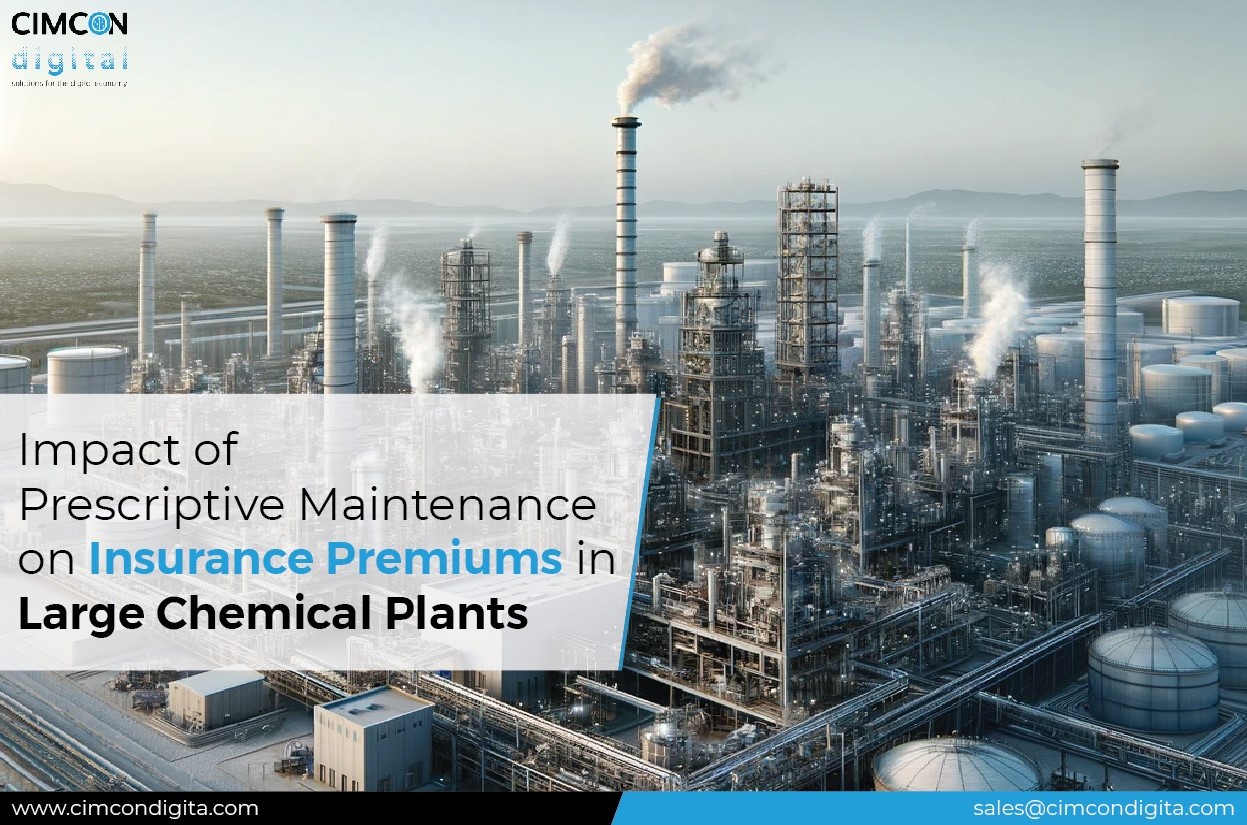
Large Industrial Enterprises in the US alone spend over $50 billion annually to insure their specialised critical equipment (Annual Report on the Insurance Industry, 2021, by the US Department of the Treasury). During premium negotiations, Insurance firms evaluate companies based on risk management programs and the safety records of industrial equipment.
Here, Prescriptive Maintenance solutions can impact this process in three key phases:

Reduced Risk and Lower Claims
• Predictive failure prevention with early anomaly detection: Identify potential equipment issues before breakdowns, reducing downtime and costly repairs. This minimises the risk of claims, potentially leading to lower premiums.
• Improved equipment lifespan: Optimize maintenance schedules to prevent premature wear and tear, resulting in fewer claims for replacements or major repairs. This benefits both the insured
• Enhanced safety & Risk Mitigation: Prevent accidents caused by equipment failures, reducing liability risks for the insured and potential payouts for the insurer.

Data-Driven Risk Assessment
• Accurate risk profiling: Time Series data provides insurers with valuable insights into equipment performance and failure patterns, enabling precise risk assessment and tailored premiums.
• Dynamically adjusted premiums: Continuous monitoring of equipment health and real-time data allows insurers to adjust premiums based on actual risk, potentially offering lower rates.

Competitive advantage
• Demonstrated cost savings: Optimize maintenance, decrease downtime, and showcase Operational Excellence for potential competitive premiums.
• Reduced environmental impact: Minimize energy consumption & plant emissions with Equipment Excellence to promote sustainability, valued by insurers for potential premium While effective implementation of Prescriptive Maintenance solutions creates a win-win situation for all stakeholders, Plant Heads & Senior Executives increasingly seek Fast ROI for any new Digital Initiatives amidst the challenging macro environment.
Hence, Prescriptive Maintenance solutions must drive adoption and showcase business impact within a financial year.

Improve Plant Safety
Predictive maintenance strengthens plant safety. In the chemical industry, critical asset failure can put employees in harm’s way. For example, if a pump transporting a chemical breaks, then that may result in a hazardous chemical spillage. Predictive maintenance is the most effective way to reduce asset failure, which can consequently reduce the risk of safety incidents.
By conducting necessary maintenance only, instances in which a maintenance engineer needs to visit assets operating in hazardous locations in the plant is also reduced. In a chemical plant, assets can often be placed in hazardous areas, and whenever an engineer needs to conduct maintenance in that area, there is a potential threat to safety. Predictive maintenance means maintenance personnel are only deployed when there is a problem to fix, and so unnecessary visits to hazardous locations can be avoided, and overall employee safety can be increased.
To sum up, predictive maintenance helps chemical plant owners to reduce downtime of critical assets, improve plant operations (for example by improving efficiency and increasing plant uptime) and improve plant safety. All these factors are driving many chemical plant owners to seriously consider adopting predictive maintenance strategies.

Improve Plant Operational Efficiency
Predictive maintenance can also enable chemical plants to improve operational efficiency. There are several reasons for this. Firstly, and as mentioned above, predictive maintenance is a more effective way of reducing asset failure and the downtime that follows. Crucially for plant operations, unplanned downtime can result in missed output quotas. By predictively maintaining assets rather than preventively, unplanned downtime can be better avoided — giving plant owners a better chance of hitting output quotas.
Real-time Vibration and other process parameter driven predictive maintenance can also help your chemical plant to reduce electricity consumption. It helps to determine the presence of a fault, whether a motor needs to be rightsized for its process, or whether the process is inefficient by design. By acting on this information, maintenance teams can reduce asset electricity consumption, therefore reducing plant energy consumption and ultimately reducing plant operating costs.
Predictive maintenance also enables increases in overall equipment effectiveness (OEE), an important measure of operational efficiency. If assets are only replaced or serviced when an actual fault has been detected, then healthy assets can continue to run until it’s necessary to change them. Within a preventive maintenance strategy, healthy assets are often unnecessarily replaced, which decreases OEE and increases operations costs.
Additionally, a predictive maintenance strategy also enables a more efficient use of maintenance resources. This is because maintenance personnel are only dispatched when an asset fault is detected, and not before. This lightens the maintenance workload, which subsequently reduces operating costs for the plant.
When a fault is detected, Real time IoT based predictive maintenance solutions can even make the act of maintenance more efficient, and consequently decreases the scheduled plant downtime window. By using real time data, solutions such as Vibit are able to determine the actual reason for the fault and offer recommended maintenance actions. This means that when the engineer inspects the motor, he or she knows exactly what to look for, and does not need to conduct a full asset inspection.
Unplanned downtime of critical equipment is bad news for any chemical plant owner. It can result in missed output quotas, higher maintenance costs and even threats to employee safety. The traditional method of reducing unplanned asset downtime is through preventive maintenance is not good enough, where maintenance is scheduled after a certain period of time, regardless of whether a fault has been detected.

Reduce Unplanned Asset Downtime
Many chemical plants have realized that preventive maintenance is not necessarily an effective method of reducing unplanned downtime of critical assets. This is because the preventive replacement time is determined by when the asset is expected to break (based on experience), and not actual insight into the condition of the asset. Consequently, assets often break down before the preventive replacement of the asset takes place.
Predictive maintenance is more effective at reducing unplanned downtime. This is because it involves collecting and analyzing actual asset data to help predict when the specific asset will fail. The maintenance engineer will be warned of asset failures months in advance, which gives the engineer sufficient time to schedule downtime and conduct maintenance. Some more advanced forms of predictive maintenance, such as VIBit by CIMCON Digital, are able to detect over 500+ developing faults, therefore giving plant owners a much more effective way of reducing (and even eliminating) unplanned downtime.

